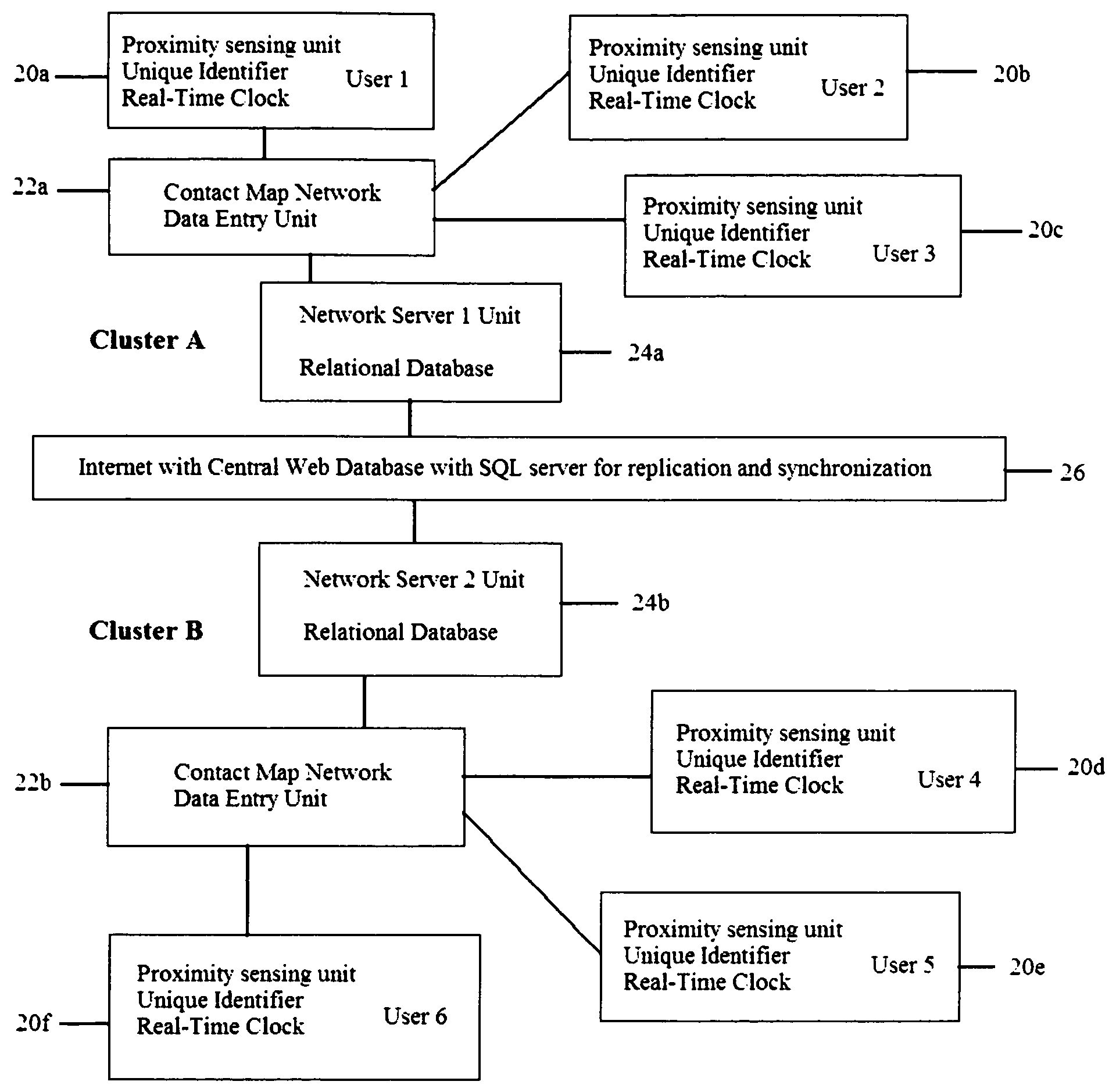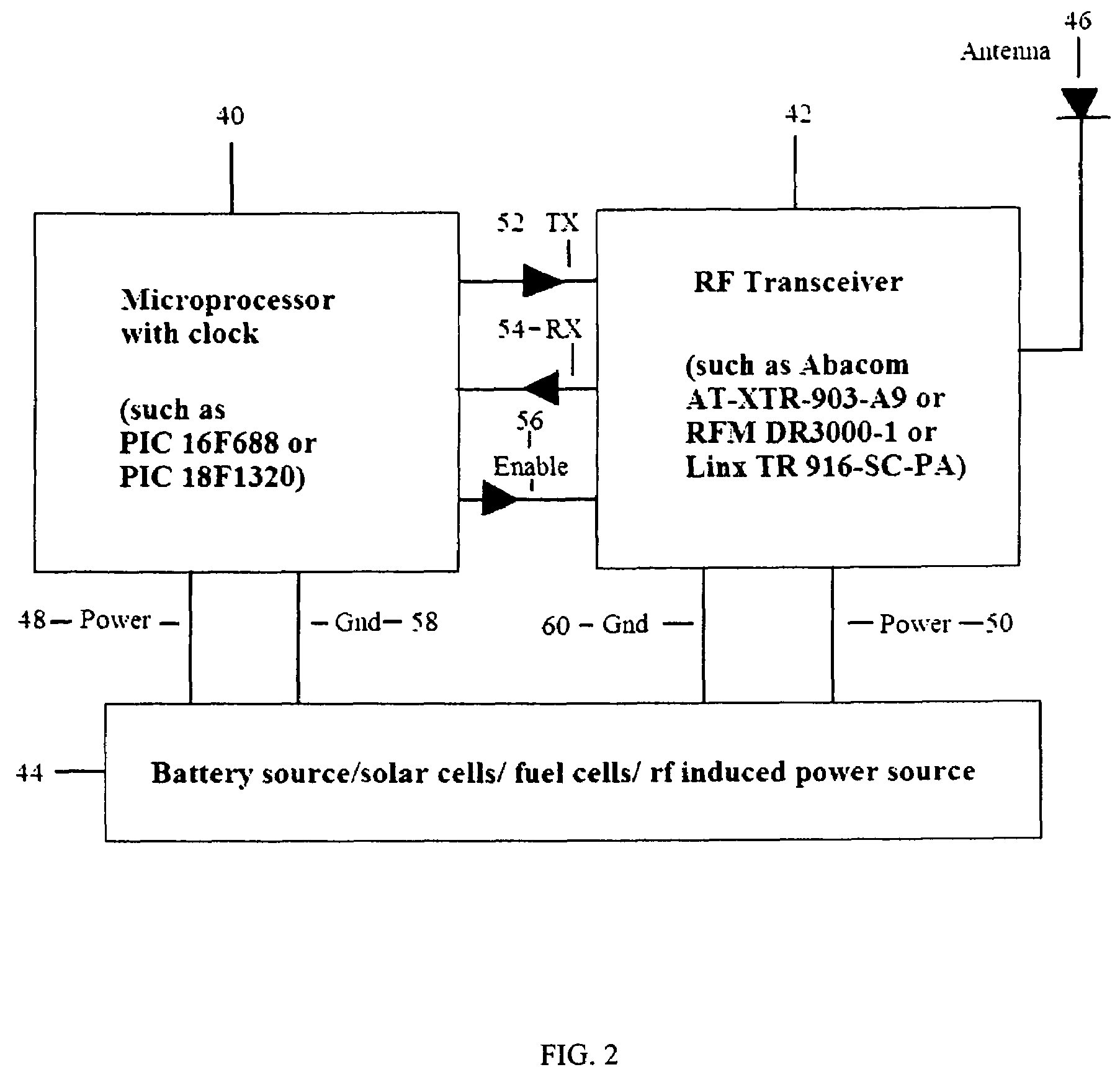System and method for creating a proximity map of plurality of living beings and objects
a technology of proximity map and plurality of living beings, applied in the field of tracking and notification system, can solve the problems of slow process, patient's symptoms, and method determination is impossibl
- Summary
- Abstract
- Description
- Claims
- Application Information
AI Technical Summary
Benefits of technology
Problems solved by technology
Method used
Image
Examples
case 1 (
Case 1 (Location by Distance Measurements Between Two “H” Units)
[0086]In FIG. 7, there are two or more high radio frequency power “H” units with enough power transmission for coverage over the entire building. The rest of the units “R”, “S” and “T” are the normal power units of proximity sensing systems. The high power unit is achieved by using a network server unit and adds RF power amplifiers to their transceivers, 66, in FIG. 4. These units can be located at a known fixed location or it has a precision GPS locator to give its actual position. One “H” unit is capable of communicating with at least another “H” unit. In addition, the two communicating “H1”, 120, and “H2”, 122, units (See FIG. 7) have to synchronize and coordinate such that both would not transmit at the same time. This is achieved by sending each other a prior to transmit notification signal, informing others that it will transmit in the next x milliseconds. All units receiving this signal, including the “H” unit wi...
case 2 (
Case 2 (Location Determination from One Distance Measurement from One “H” Unit)
[0088]In the scenario when only one “H” unit location is available, Unit “S”126, can infer its location if it triangulates with unit “H1”, 120, and another unit “T”, 128, with sides L4, 136, L5, 138 and L6, 140. However, the absolute location of unit “T”, 128, would not be known until it has determined its absolute location from the two H units using the triangle with sides L1, 130, L5, 138, and L7, 142.
case 3 (
Case 3 (Location Determination from Other Non “H” Units)
[0089]FIG. 8 shows that the mobile “U”, 148, unit's location determination is to derive from two other non “H” units. FIG. 8 shows three mobile units, “R”, 146, “T”, 150, and “U”, 148, where units “R”, 146, and “T”, 150, positions were previously determined from their triangulation described in Case 1 (FIG. 7). However, this assumes the units “R”, 146, and “T”, 150, locations were determined within a very short time before “U”, 148, position is found. This is a quasi-static assumption.
[0090]By induction, the above steps can be repeated to determine all locations for any number of mobile units as long as they satisfy any one of the above cases under the quasi-static assumption.
7) Matrix Formulation of the Contact Tree Network Map
[0091]The overall contact network map can be represented in a matrix format. All the unique identifiers form a vector as illustrated by equation 2 as [RSTU].
[0092]The contact tracking network tree is for...
PUM
 Login to View More
Login to View More Abstract
Description
Claims
Application Information
 Login to View More
Login to View More - R&D
- Intellectual Property
- Life Sciences
- Materials
- Tech Scout
- Unparalleled Data Quality
- Higher Quality Content
- 60% Fewer Hallucinations
Browse by: Latest US Patents, China's latest patents, Technical Efficacy Thesaurus, Application Domain, Technology Topic, Popular Technical Reports.
© 2025 PatSnap. All rights reserved.Legal|Privacy policy|Modern Slavery Act Transparency Statement|Sitemap|About US| Contact US: help@patsnap.com



